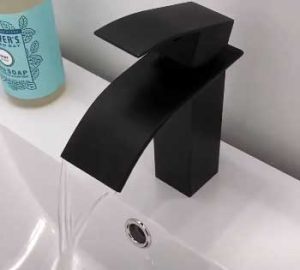Most of us take our furnace for granted until we encounter a chilly night when it decides to break down. The feeling of cold air flowing from your vents instead of the comforting warmth you’re accustomed to is anything but pleasant.
One such furnace you may have installed in your home is the Ultra Low NOx furnace, hailed for its eco-friendly performance. However, there can be a few hurdles along the way, or in our case, problems with the Ultra Low NOx furnace that you need to be aware of.
Let’s delve into the story of these challenges.
A Closer Look At Ultra Low NOx Furnace Problems
Let’s dive deeper into the problems that may surface with the Ultra Low NOx furnace. As much as we would love for our furnaces to function flawlessly forever, that’s often not the case.
- The Hurdle of Ignition Failure

When dealing with problems with Ultra Low NOx furnaces, one of the primary issues is ignition failure.
As the heart of the furnace, the burner’s job is to ignite the gas, which creates the heat that warms your home.
But what happens when this crucial component fails to do its job?
You’re left in the cold, literally.
The root cause of this problem often traces back to the advanced design of Ultra Low NOx burners.
These burners, although more eco-friendly, are intricate and require precise adjustments for proper ignition.
If these settings are off, even slightly, the burner may fail to ignite, leaving your furnace useless until the problem is fixed.
Also Read: Problems With Trane XV20i Variable Speed Air Conditioner.
- Unseen Flames: The Flame Sensor Issue
A little-known but crucial component of your furnace is the flame sensor. Its job is to confirm the presence of a flame when the gas valve is open.
If the sensor can’t detect a flame, it shuts down the system to prevent unburned gas from filling your home. It’s an essential safety feature, but it’s also a common source of problems with Ultra Low NOx furnaces.
The flame sensor can become dirty over time, impairing its ability to detect flames accurately. When this happens, the sensor might falsely report that no flame is present, causing the system to shut down even when everything else is functioning correctly.
Regular maintenance can help avoid this problem by keeping the sensor clean and functioning properly.
- Heat of the Matter: Overheating Problems
Ultra Low NOx furnaces are designed to operate at higher temperatures to reduce NOx emissions effectively. However, this increased operational temperature can lead to frequent overheating, which can strain various components and lead to faster wear and tear.
Overheating is often indicated by the furnace cycling on and off more frequently than it should, which is a process known as short cycling. If left unchecked, this could lead to significant damage and costly repairs.
- The Constant Companion: Intensive Maintenance
Lastly, these advanced furnaces require a high degree of maintenance to keep them operating efficiently. This includes regular tune-ups and adjustments to ensure that all the components are functioning correctly and that the burner settings are accurately calibrated.
While maintenance is a necessary part of owning any furnace, Ultra Low NOx models require a bit more attention due to their intricate design.
Failing to keep up with this maintenance can lead to a host of problems, including the ones we’ve already discussed, and shorten the lifespan of your furnace.
Is the Ultra Low NOx Furnace Worth It?
When evaluating the worthiness of an Ultra Low NOx furnace, it’s essential to weigh its benefits against its potential problems. Let’s take a look at why an Ultra Low NOx furnace could indeed be worth the investment.
- Champion of the Environment: Reduced Emissions

There’s no denying that one of the primary reasons to choose an Ultra Low NOx furnace is its significantly reduced emissions.
By emitting less than 10 nanograms of NOx per joule of heat output, these furnaces play a crucial role in reducing air pollution and combating climate change.
Choosing an Ultra Low NOx furnace for your home is a direct contribution to cleaner air and a healthier planet, a benefit that’s hard to quantify in terms of dollars and cents but is of immense value nonetheless.
- Increased Energy Efficiency: Lower Energy Bills
Ultra Low NOx furnaces are not just champions for the environment, but also for your wallet. Thanks to their advanced design and technology, they are typically more energy-efficient than traditional models, meaning they require less fuel to heat your home.
In the long run, this increased energy efficiency translates into lower energy bills, making the Ultra Low NOx furnace an investment that can pay for itself over time.
- Regulatory Compliance: Future-Proof Your Home
As regulations around emissions become more stringent, having an Ultra Low NOx furnace means you’re ahead of the curve. In regions where emission limits are strictly enforced, such as Southern California, Ultra Low NOx furnaces are not just a preference, but a requirement.
Investing in one of these furnaces now means you’re future-proofing your home, saving yourself from potential regulatory headaches down the line.
- The Power of Choice: High-Quality Options
While Ultra Low NOx furnaces may require more maintenance and face some unique problems, it’s worth noting that there are high-quality options available from trusted manufacturers like Trane, Lennox, and Carrier.
These companies have invested heavily in research and development to mitigate common problems and provide reliable, high-performing Ultra Low NOx furnaces.
Also Read: Problems With EcoNet Thermostat.
FAQ: Getting to Know Your Ultra Low NOx Furnace
Here are answers to some of the most frequently asked questions about Ultra Low NOx furnaces.
The laws regarding Ultra Low NOx furnaces vary by location. In some regions, like Southern California, regulatory bodies such as the South Coast Air Quality Management District mandate that residential furnaces emit less than 14 nanograms of NOx per joule of heat output. Ultra Low NOx furnaces, emitting less than 10 nanograms, far surpass these requirements, making them a preferred choice for eco-conscious homeowners.
The best Ultra Low NOx furnace depends largely on your specific needs and the size of your home. However, popular choices often include models from brands like Trane, Lennox, and Carrier due to their performance, reliability, and energy efficiency.
The key difference between low NOx and ultra low NOx furnaces lies in the amount of nitrogen oxides they emit. While a low NOx furnace has been designed to reduce NOx emissions, an ultra low NOx furnace takes this a step further, emitting significantly less NOx and thus being more eco-friendly.
An Ultra Low NOx furnace reduces NOx emissions by utilizing a unique burner design. This design burns the gas more efficiently and at higher temperatures, leading to fewer nitrogen oxides being produced during combustion.
Concluding Our Story: Balancing Act
The Ultra Low NOx furnace is a classic story of a protagonist striving to strike a balance. It delivers on its promise of reducing emissions and contributing to a healthier environment.
Yet, it has its set of challenges that can put a damper on its performance.
While the furnace is our eco-friendly hero, understanding its potential problems ensures we can get the best from it while enjoying a warm and cozy home.
This understanding is the first step towards responsible and efficient use, ensuring we can keep the cold at bay while caring for our planet.




How dangerous is it really to use a NON loNOX furnace?